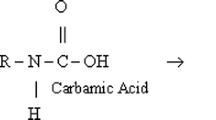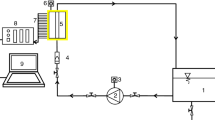Abstract
In order to numerically simulate the foaming behavior of mastic sealer containing the blowing agent, a foaming and driving force model are needed which incorporate the foaming characteristics. Also, the elastic stress model is required to represent the material behavior of co-existing phase of liquid state and the cured polymer. It is important to determine the thermal properties such as thermal conductivity and specific heat because foaming behavior is heavily influenced by temperature change. In this study, three models are proposed to explain the foaming process and material behavior during and after the process. To obtain the material parameters in each model, following experiments and the numerical simulations are performed: thermal test, simple shear test and foaming test. The error functions are defined as differences between the experimental measurements and the numerical simulation results, and then the parameters are determined by minimizing the error functions. To ensure the validity of the obtained parameters, the confirmation simulation for each model is conducted by applying the determined parameters. The cross-verification is performed by measuring the foaming/shrinkage force. The results of cross-verification tended to follow the experimental results. Interestingly, it was possible to estimate the micro-deformation occurring in automobile roof surface by applying the proposed model to oven process analysis. The application of developed analysis technique will contribute to the design with minimized micro-deformation.
Similar content being viewed by others
References
Bordia, R.K. and G.W. Scherer, 1988, On constrained sintering-I. Constitutive model for a sintering body, Acta Metal. 36, 2393–2397.
Boubakri, A., N. Haddar, K. Elleuch, and Y. Bienvenu, 2011, Influence of thermal aging on tensile and creep behavior of thermoplastic polyurethane, C. R. Mecanique 339, 666–673.
Chapra, S.C. and R.P. Canale, 2006, Numerical Methods for Engineers, McGraw Hill Education. Seoul.
Duncan, B.C., 1999, Test methods for determining hyper-elastic properties of flexible adhesives, NPL Measurement Note No. CMMT(MN)054.
Duncan, B.C., A.S. Maxwell, L.E. Crocker, and R.A. Hunt, 1999, Verification of hyper-elastic test methods, NPL Report No. CMMT(A)226.
Fluhrer, J., 2004, DEFORM ™ -2D Version 8.02 User’s manual, USA.
FRAMAX Inc., PIAnO User’s Manual Version 3.3, FRAMAX Inc., Korea.
Han, K.T., 1995, Adhesives on automobile, Polym. Sci. Technol. 6, 568–576.
Hibbitt, H., B. Karlsson, and P. Sorensen, 2011, Abaqus Analysis User’s Manual Version 6.10, Dassault Systèmes Simulia Corp, USA.
Horgan, C.O., 1992, Void nucleation and growth for compressible non-linearly elastic materials: An Example, Int. J. Solids Struct. 29, 279–291.
Hwang, J., N. Kim, H. Lee, and D. Kim, 2013, Determination of flow stress of zircaloy-4 under high strain rate using slot milling test, Trans. Korean Soc. Mech. Eng. A 37, 67–75.
Hyundai motor Co. Ltd., 2003, Form low-strength mastic sealer composition, Korea Patent, KR-A-1020030026672.
Incropera, F.P., D.P. Dewitt, T.L. Bergman, and A.S. Lavine, 2007, Introduction to heat transfer, John Wiley and Sons Pte Ltd., Singapore.
Jacobs, M.A., M.F. Kemmere, and J.T.F. Keurentjes, 2004, Foam processing of poly (ethuylene-co-vinyl acetate) rubber using supercritical carbon dioxide, Polymer 45, 7539–7547.
Jeong, H.Y., 1999, Void nucleation models, Trans. Korean Soc. Mech. Eng. A 302–308.
Jeong, H.Y., 2002, A new yield function and a hydrostatic stresscontrolled void nucleation model for porous solids with pressure-sensitive matrices, Int. J. Solids Struct. 39, 1385–1403.
Kalpakjian, S. and S.R. Schmid, 2008, Manufacturing processes for engineering materials, 5th ed., Pearson Education South Asia Pte Ltd., Singapore.
Kim, H.S. and J.W. Youn, 2009, A study on foaming characteristics of polyurethane depending on environmental temperature and blowing agent content, Trans. Mater. Process 18, 256–261.
Kim, M.S., K.J. Hong, and D.H. Choi, 2001, Trust-region managed approximate optimization with a progressive quadratic response surface modeling, Optimization in industry III.
Kim, Y.H. and R. Zafare, 2007, Study of baseline to determine foaming temperature in microcellular foaming process, Trans. Korean Soc. Mech. Eng. B 66–69.
Li, Y., Z. Yao, Z. Chen, K. Cao, S. Qiu, F. Zhu, C. Zeng, and Z. Huang, 2011, Numerical simulation of polypropylene foaming process assisted by carbon dioxide: Bubble growth dynamics and stability, Chem. Eng. Sci. 66, 3656–3665.
Liao, R., and C. Zhou, 2010, Rheological control in foaming polymeric materials: II. Semi-crystalline polymers, Polymer 51, 6334–6345.
Najib, N.N., Z.M. Ariff, A.A. Bakar, and C.S. Sipaut, 2011, Correlation between the acoustic and dynamic mechanical properties of natural rubber foam: Effect of foaming temperature, Mater. Des. 32, 505–511.
Robledo-Ortiz, J.R., C. Zepeda, C. Gomez, D. Rodrigue, and R. Gonzalez-Nunez, 2008, Non-isothermal decomposition kinetics of azodicarbonamide in high density polyethylene using a capillary rheometer, Polym. Test. 27, 730–735.
Rodriguez-Perez, M.A., R.A. Campo-Arnaiz, R.F. Aroca, and J.A. Saja, 2005, Characterisation of the matrix polymer morphology of polyolefins foams by Ramanspectroscopy, Polymer 46, 12093–12102.
Sarier, N. and E. Onder, 2007, Thermal characteristics of polyurethane foams incorporated with phase change materials, Thermochim. Acta 454, 90–98.
Taki, K., 2008, Experimental and numerical studies on the effects of pressure release rate on number density of bubbles and bubble growth in a polymeric foaming process, Chem. Eng. Sci. 63, 3643–3653.
Author information
Authors and Affiliations
Corresponding author
Rights and permissions
About this article
Cite this article
Hwang, J.H., Lee, S., Hwang, S.Y. et al. Development of analysis technique to predict the material behavior of blowing agent. Korea-Aust. Rheol. J. 26, 389–400 (2014). https://doi.org/10.1007/s13367-014-0044-y
Received:
Revised:
Accepted:
Published:
Issue Date:
DOI: https://doi.org/10.1007/s13367-014-0044-y




